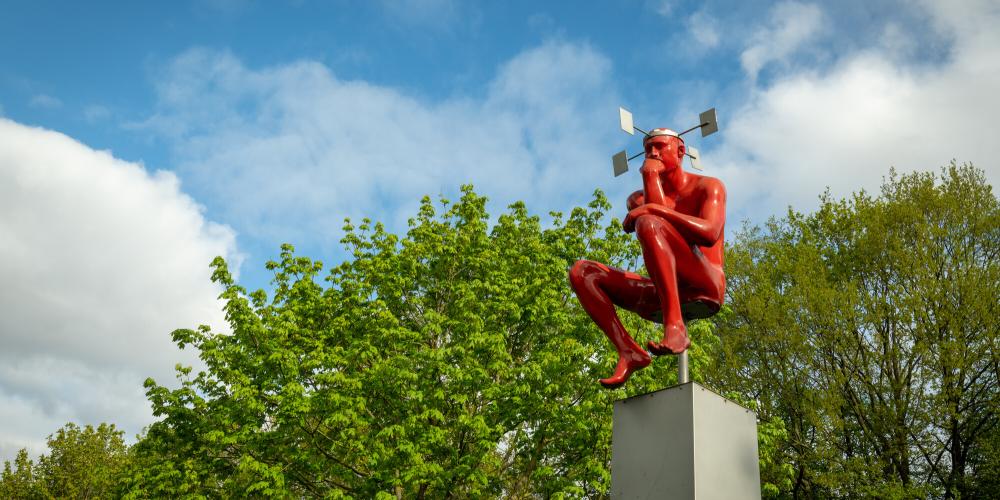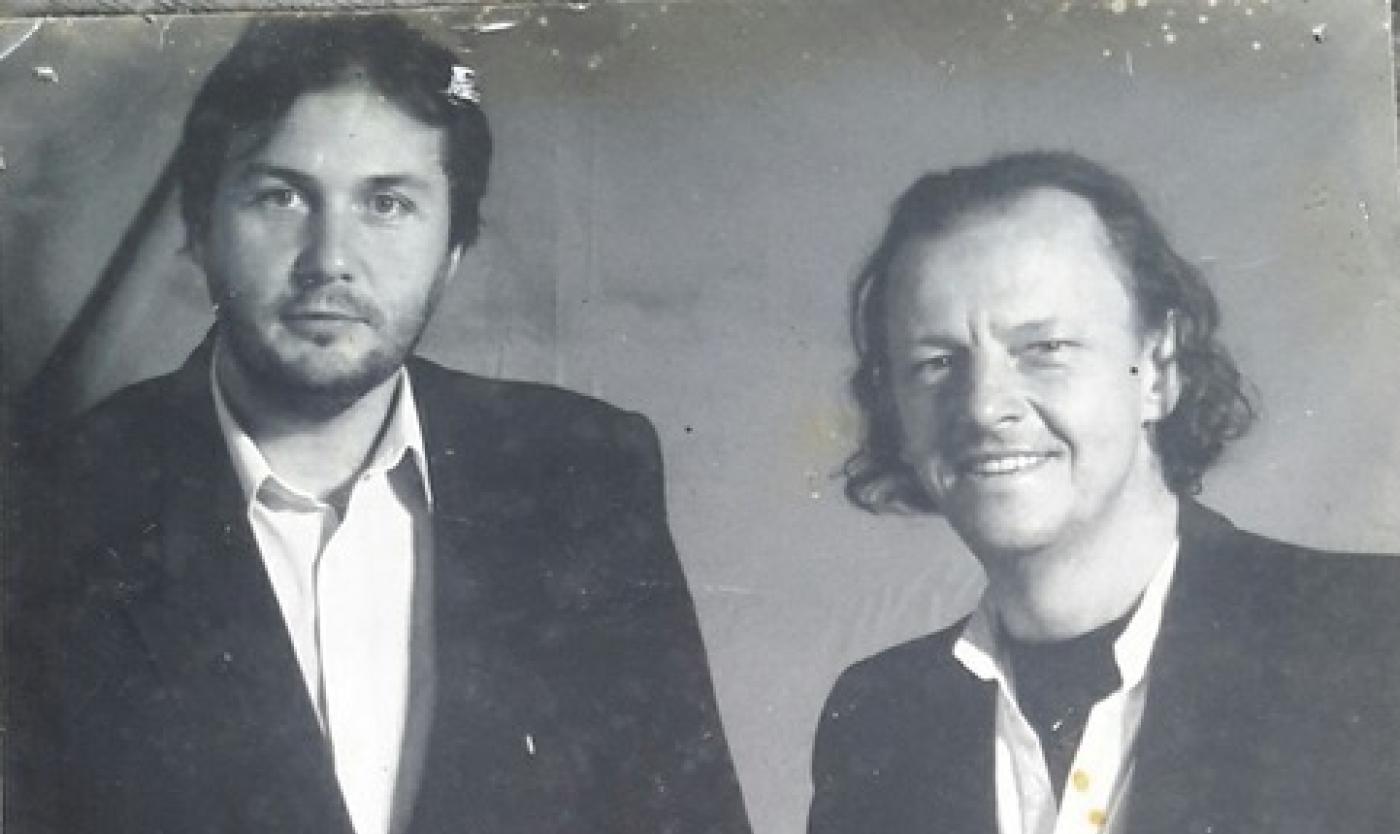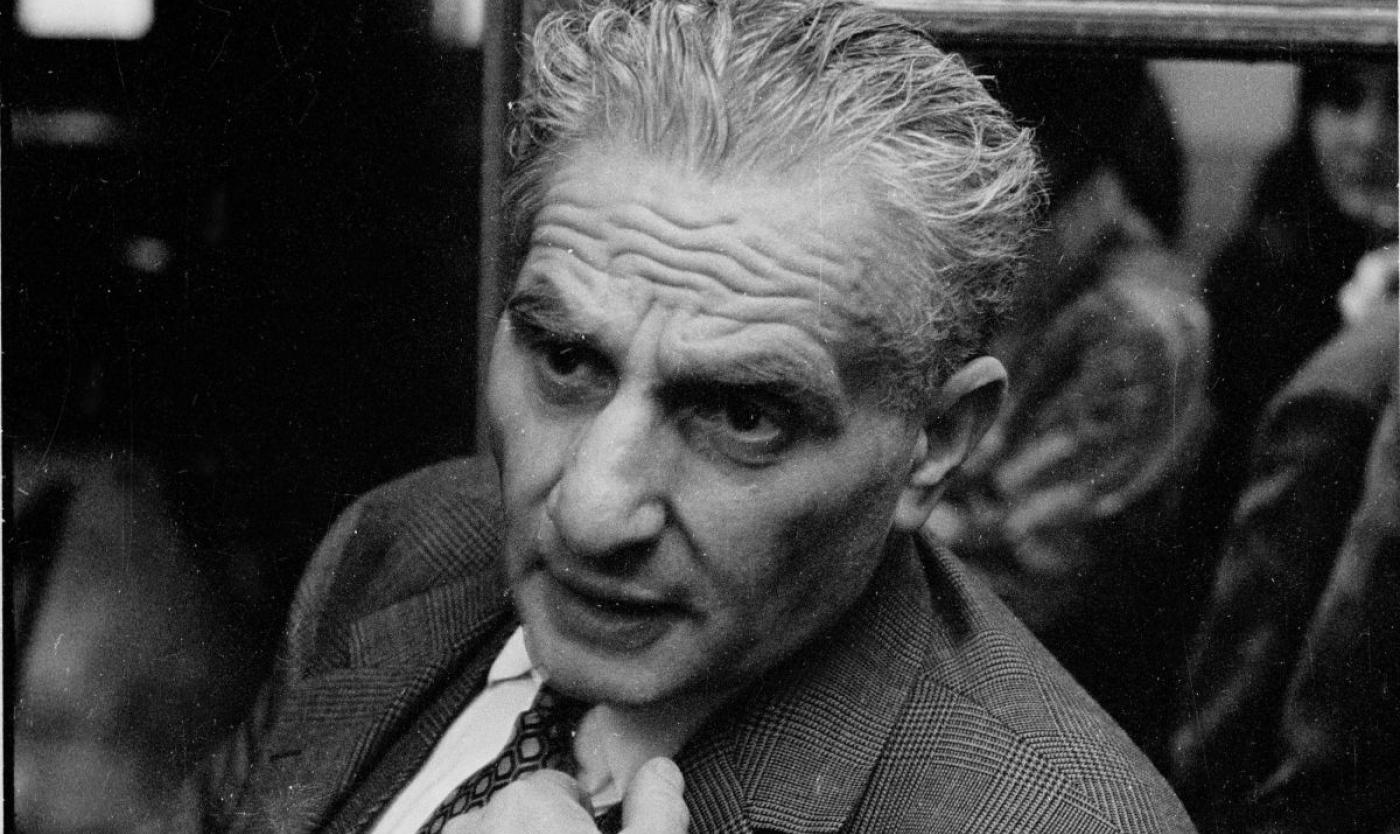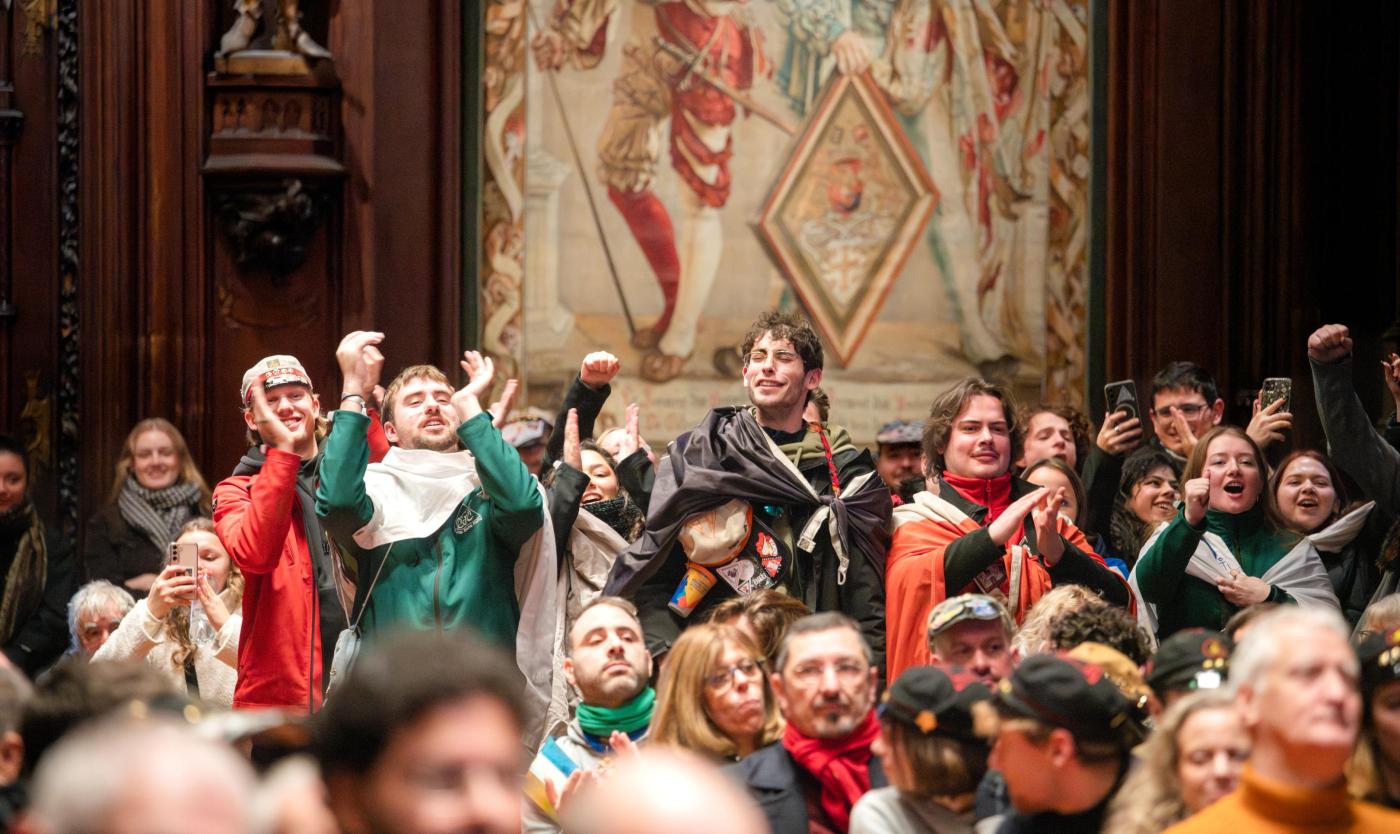
The VUB bids farewell to Willy Vandendorpe, the artist who gifted our university its most recognisable sculpture: Denker in alle Staten. He passed away in Ghent on Monday 9 June. Through his work, Vandendorpe leaves a lasting impression on the campus – and on the thinking of many generations of VUB students and staff.
Since 2006, the bright red sculpture – a defiant reinterpretation of Rodin’s famous The Thinker – has stood tall on its plinth overlooking the campus. Not merely an ode to reason, but a critical reflection on its limits. Vandendorpe added a weather vane to the figure – a subtle but striking intervention. The sculpture warns of the dangers of rational thought left unchecked: dogmas, fundamentalism, even the descent into war and violence. A message, sadly, more relevant than ever.
“It is a concept in flux – quite literally. The direction of thinking is never absolute, never fixed,” said emeritus professor Jean Paul Van Bendegem in an earlier interview. “Perhaps the most powerful visual metaphor for the principle of free inquiry that the VUB holds so dear.”
The sculpture is part of the university’s Humanist Sculpture Park, a collection of artworks that represent or question the core values of the institution. Among these, Denker in alle Staten has become the flagship piece – a sculpture that denounces, challenges, and inspires all at once.
Even the material it was made from connects the work to the university. Vandendorpe chose Vubonite, a ceramic polyester developed at the VUB in the 1980s. The glossy red finish makes it an unmistakable landmark on campus.
Vandendorpe – also known under the pseudonym W.J.P. Levi – was an artist of symbols, of layered meaning. He deconstructed familiar signs and added his own, encouraging viewers to see well-known images through a new lens.
The unveiling of Denker in alle Staten in 2007, marking 150 years of Flemish student presence in Brussels, was a symbolic moment. It linked past, present and future in a work that continues to challenge us to think, to question, and to doubt.
With the passing of Willy Vandendorpe, the VUB loses a kindred spirit. Yet his work endures – speaking to the power of thought, and the ongoing need to interrogate it.
VUB Emeritus Professor Willem Elias on Willy Vandendorpe
Emeritus professor of social pedagogy, philosopher and art connoisseur Willem Elias is the driving force behind the sculpture park on the VUB Campus, which includes ‘The Thinker in All States’. The artists in the sculpture park are not only influential names in Belgian art, but are also considered free thinkers pur sang. Through their work, they express principles such as free inquiry, liberalism, science, democracy, friendship and compassion. He wrote this contribution about Willy Vandendorpe in the book ‘Kunst en Humanisme 2 - Vrijzinnige beelden’ deze bijdrage.
Willy Vandendorpe (°1942-2025)
By Willem Elias
The postmodern artist does not seek the new ‘in’ the artwork, but around it, i.e. in the novelty of the context, which is full of nods to existing meanings, thereby calling them into question. He is aware of the paradox that the need to be new is doomed to the fate of quickly becoming old. The change of contexts and playing with the old arts, which were once new, is a strategy to avoid this paradox like a matador. He mainly shows the craftsmanship of the once new work of art that has grown old. And also the lonely ideology – because the form has lost its grounding – that is orphanedly connected to it. The banner is no longer a banner when its bearers have fled. This relativism seems to me to be the hollow core of postmodern art.

Willy Vandendorpe (right) and Willem Elias.
Willy Vandendorpe's work ‘Denker in alle staten’ (Thinker in all states) can be interpreted through the above theoretical reflection. He reproduces Rodin's thinker through a cast of a living model in the same posture. It is also known as the ‘Red Thinker’. That colour undermines the truth-affirming precious metal bronze of the original sculpture. In Western culture, Rodin's Thinker is the opposite of the crucified Christ. Unfortunately, a smaller model does not stand on every Flemish mantelpiece. But this symbol of rationality, as created by Rodin, cannot be separated from a nineteenth-century optimistic confidence in science that no longer has any basis today. Rationality failed too often in the twentieth century: dogmatism, fundamentalism, nuclear weapons, concentration camps, terrorism and wars. Reason has no absoluteness and can have dangerous relativities, its negative limits. Its ability to relativise can also save it, replenish it, re-educate it, rethink it.
By crowning Rodin's Thinker with a weather vane, Vandendorpe criticises the possible manipulations of rational thinking. ‘Thinking must not submit...’ is the VUB motto, but there is still a danger of manipulation. After all, research has to be funded.
His criticism fits in with free research and the need to constantly question everything. Only by constantly scrutinising values that are taken for granted can these values be kept alive. That is the task of the artist, as well as that of the freely researching scientist.
As a miniature model, it became a kind of mascot of the VUB, cherished by many staff members who received it as a souvenir.
In addition to drawing and painting, Willy VDD, as his artist name is sometimes called, has contributed to conceptual art. He developed a shaky drawing system full of word and image puns that undermines the established order and thumbs its nose at the general public. Anarchistic mischief is always close to Willy.
He spent a long time in the vicinity of the VUB, long before the concept of ‘artist in residence’ became popular. In the 1980s, he created installations in the vacant buildings across from the campus, accompanied by the then curator for exhibitions, Marleen Van Herck. Afterwards, he had his studio in the Vissersschool, near Tour & Taxis, where the VUB housed its international students at the time.

